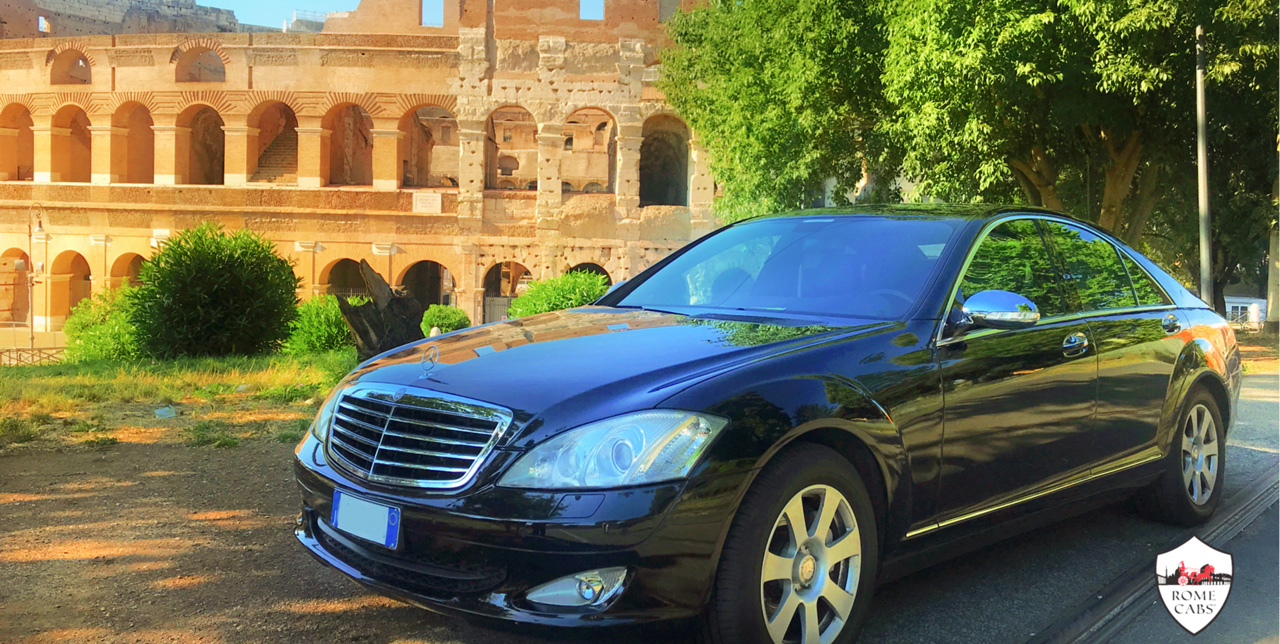Seven Wonders of Ancient Rome
Buon giorno and welcome to Stefano's RomeCabs, Rome's leading company for private day tours from Rome and shore excursions from Civitavecchia cruise port. This blog accompanies the Rome Cabs’ exclusive Rome tour "Seven Wonders of Ancient Rome" available as a Rome tour from a local hotel and a shore excursion from Civitavecchia.
SEVEN WONDERS OF ANCIENT ROME - TOUR
Ancient Romans were, by standards of their times, visionaries in architecture and engineering that proved unsurpassed for well over a thousand years after the Roman Empire fell.
Although not all were their own inventions, the Romans certainly improved on some technologies they acquired from the Etruscans in impressive ways: the arches that made building the Colosseum and Aqueducts possible, and gladiatorial games that entertained the masses on a daily basis, sewage systems that kept the city clean and population healthy (in fact, Cloaca Maxima or “greatest sewer” was constructed under the order of Etruscan King of Rome, Tarquinius Priscus), underfloor heating that created steam baths in the Baths of Caracalla, atriums and villas decorated with frescoes that paved way to the Roman “Domus” built for Emperors and the elite class.
With existing technologies they perfected, and with new technologies they invented (such as concrete), the Romans revolutionized architecture and achieved engineering advancements to create the most impressive and influential works of wonder of all time. Even more impressive is the fact that some of these ancient wonders are still in use today!
Seven of these astonishing achievements have earned their prestigious spot among the Seven Wonders of Ancient Rome. The list is in order of the itinerary of the tour.
COLOSSEUM – the world’s greatest ancient amphitheater
The construction of the Colosseum began in 72 AD by Emperor Vespasian as a gesture of goodwill to the Roman people, an exorbitant self-promotion campaign, and a triumphal monument.
Symbolically, it was built over what used to be the Domus Aurea, the extravagant “Golden Palace” complex that Emperor Nero built over the area that burned down in the big fire of 64 AD that decimated much of Rome.
What Nero seized from the people to build his private palace complex, Vespasian gave back to the people in terms of the greatest sports arena the world had ever seen. Found inscribed were the words: “The emperor Vespasian ordered this new amphitheater to be erected from his general’s share of the booty.”
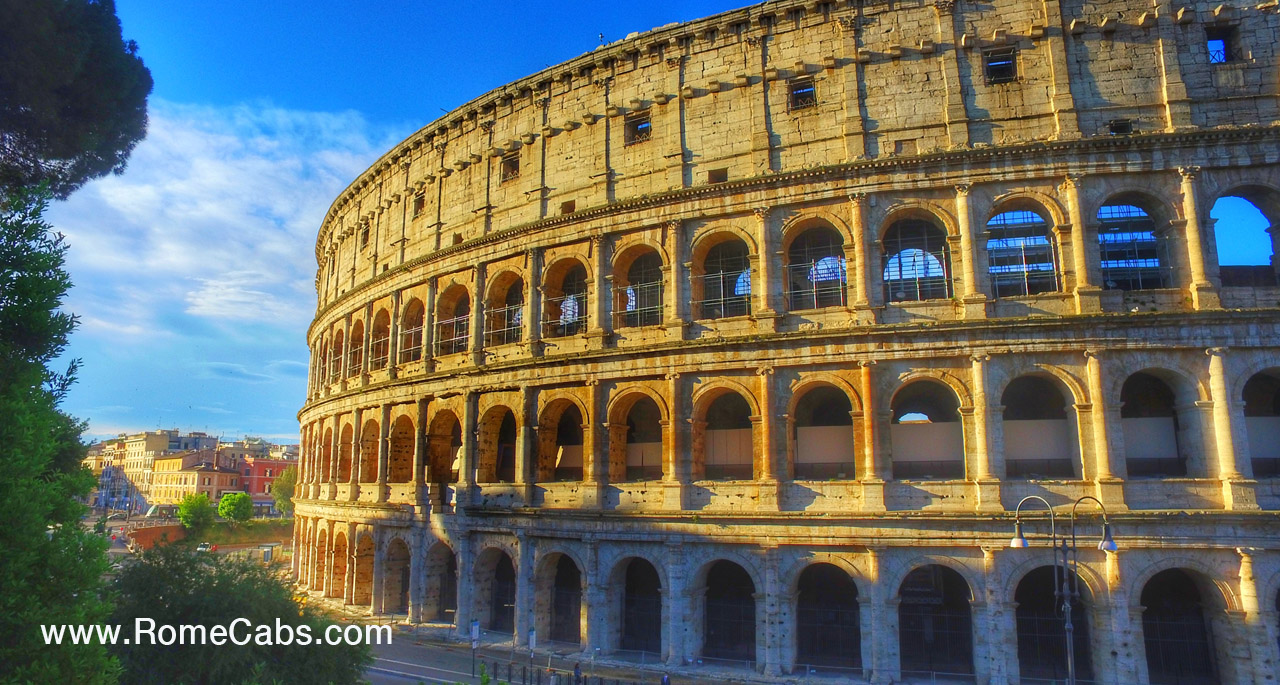
This was in reference to the Roman victory in the Great Jewish Revolt in 70 AD that resulted in massive amounts of treasure. Some theories held that Vespasian used the labor of captured Jews to build the amphitheater, but when one considers the advanced skills in engineering and construction required to realize such a monument, it is highly unlikely he used untrained labor. Instead, it is quite possible he sold the captives as slaves to help fund the project.
The area that Vespasian chose for the site for his new arena was over what used to be an elaborate artificial lake on the immense Imperial property. The lake was drained, and work began on the arena that was originally named the Flavius Amphitheater, the family name of Emperor Vespasian. The emperor did not live to see it finished, so his son Titus oversaw its completion in 80 AD.
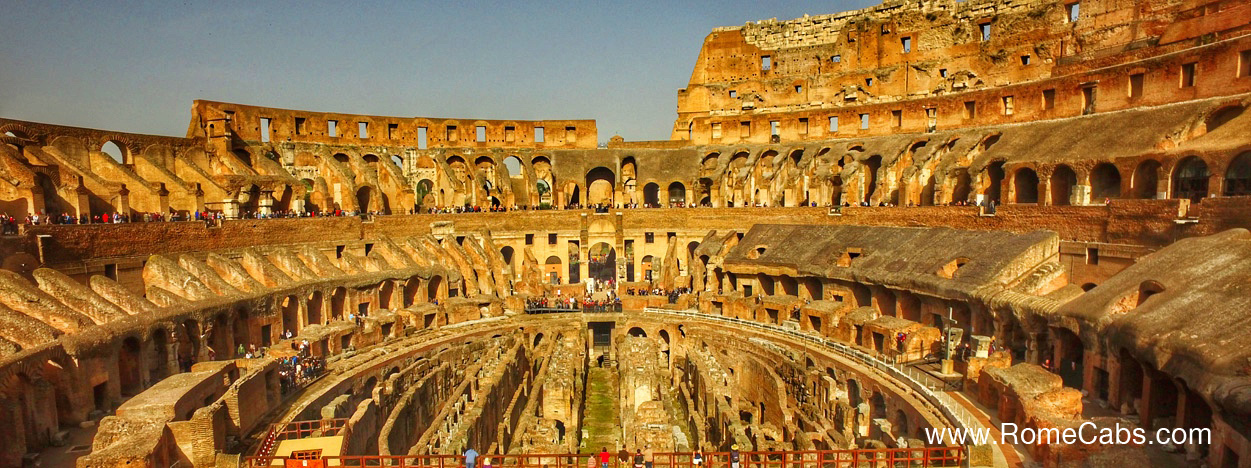
The name Colosseum was originally the nickname of the colossal golden statue of Nero as the sun god Apollo that stood erect next to the Colosseum (the site where it once stood is still visible). The amphitheater eventually acquired the nickname for itself, and the colossal statue was ultimately taken down and recycled.
What makes the Colosseum so incredible is not just its size which was the biggest to be built in Ancient Rome, but that it used two elements that made all the difference: the Arch, and Concrete.
Eighty arches made up the bottom 3 floors of the Colosseum. The upper 2 floors were made of solid brick. These vaulted arches provided strength to the structure, architectural design, and plenty of open space that provided quick and efficient passage of up to 80,000 spectators in and out of the amphitheater through 75 entrances.
Roman concrete was made primarily out of pozzolana (volcanic ashes from the Bay of Naples region of Pozzuoli) lime, and a mixture of rubble.
One hundred thousand cubic meters of travertine stone quarried from the nearby town of Tivoli was used to build the outer wall, with blocks set without mortar but instead held together with 300 tons of iron clamps.
To shade the audience from Rome’s hot summer sun, enormous awnings above the arena were drawn by 1,000 sailors.
Unlike a theater with a stage, the elliptical amphitheater provided perfect viewing opportunities of the arena virtually from any seat. Without a backstage, a hypogeum was created underground. This labyrinth of elaborate tunnels and passages served as the backstage where everything including stage sets, gladiators, and animals were easily moved above and below the arena by utilizing ramps and lifts.
For the inauguration of the Colosseum by Emperor Titus, the public enjoyed 100 days of gladiatorial combats, public executions, re-enactments of famous battles, and animal hunts that transformed the Colosseum into a death arena.
CIRCUS MAXIMUS – ancient stadium for chariot races
Circus Maximus, not far from the Colosseum, is now a faint reminder of its once magnificent grandeur.
It was commissioned by Emperor Trajan in the early 2nd century AD to be rebuilt from its original weak wooden structure that was prone to fire, into a permanent stone and concrete entertainment complex, destined to last 500 years and become the largest stadium ever built in both ancient and modern times and an inspiration to contemporary sports stadiums worldwide. In addition to the arena, the Circus Maximus also served as a recreational venue lined with shops, eateries, and other forms of social entertainment.
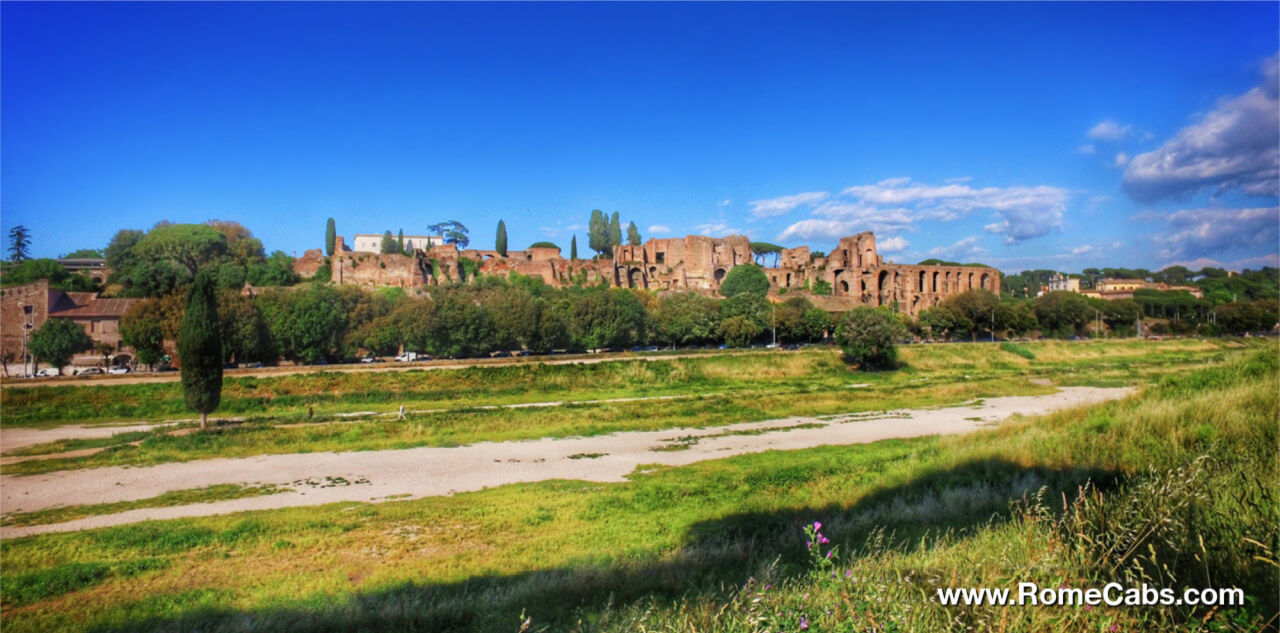
Measuring more than 2,000 feet long, nearly 400 feet wide, and 100 feet high, Circus Maximus accommodated up to 350,000 spectators on 4 seating tiers. While it also held gladiatorial and beast combats, it was most famously used for death-defying chariot racing.
During a standard race, twelve chariots raced seven times around the 300-meter-long dividing barrier placed in the center of the oblong stadium called a spina.
The spina centerpiece was the Obelisk Flaminio that once belonged to Egypt’s Pharaoh Ramses II, now erected in Piazza del Popolo. This dangerous sport produced more than 50 deaths a year, but charioteers who survived and won races achieved celebrity status and enjoyed all the perks that came with it.
BATHS OF CARACALLA – ancient spa complex
Rome’s ruthless tyrant emperor Caracalla (officially named Marcus Aurelius Severus Antoninus Augustus) was responsible for overseeing the construction of the greatest and most opulent bath complex in all of Rome.
This project of massive scale is believed to have been commenced by his father Emperor Septimius Severus in 206 AD and completed by 216 AD by Caracalla with its initial name being Thermae Antoninianae (Antonian Baths) which eventually evolved into the Baths of Caracalla.
With more than 900 public baths available to the public in Rome, there was certainly no shortage of public baths when the Baths of Caracalla were constructed, but none of them compared to the sophistication, size, and splendor of this Imperial bath and spa complex that spanned across 33 acres with the capacity to accommodate up to 1,600 bathers at once, while thousands more made use of its Greek and Latin libraries, meeting rooms, gardens, temple, beauty and massage parlors, cafes and shops that were available in the vast complex. Elaborate mosaics, statues, and sculptures adorned the interior and the exterior of this opulent bath complex.
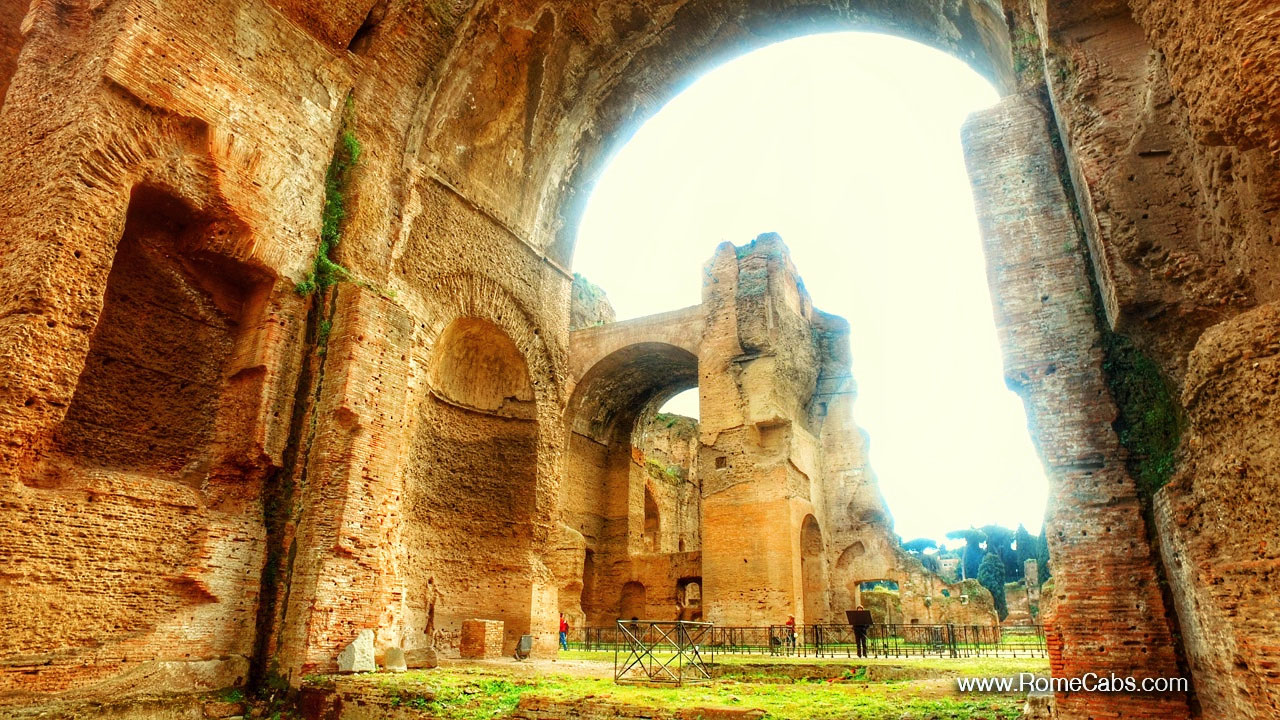
At more than 30,000 square feet, the central space of the baths included a Frigidarium (cold water baths) a large Tepidarium (Tepid water bath), a Caldarium (Hot water sauna), two Palaestras (Gymnasiums), and an Olympic size Natatio (Swimming Pool). This circular swimming pool had panels of bronze mirrors installed above in order to direct sunlight into the pool area below.
While the baths must have been a heavenly experience for the bathers, the underground network of service corridors must have been hellish for the slaves who manned the 50 furnaces with more than 2,000 tons of wood to heat up the baths above.
A vast system of underground terracotta pipes provided more than 2 million gallons of hot and cold water, as well as removed wastewater from the baths. Terracotta pipes strategically placed inside the walls provided hot air to heat the rooms.
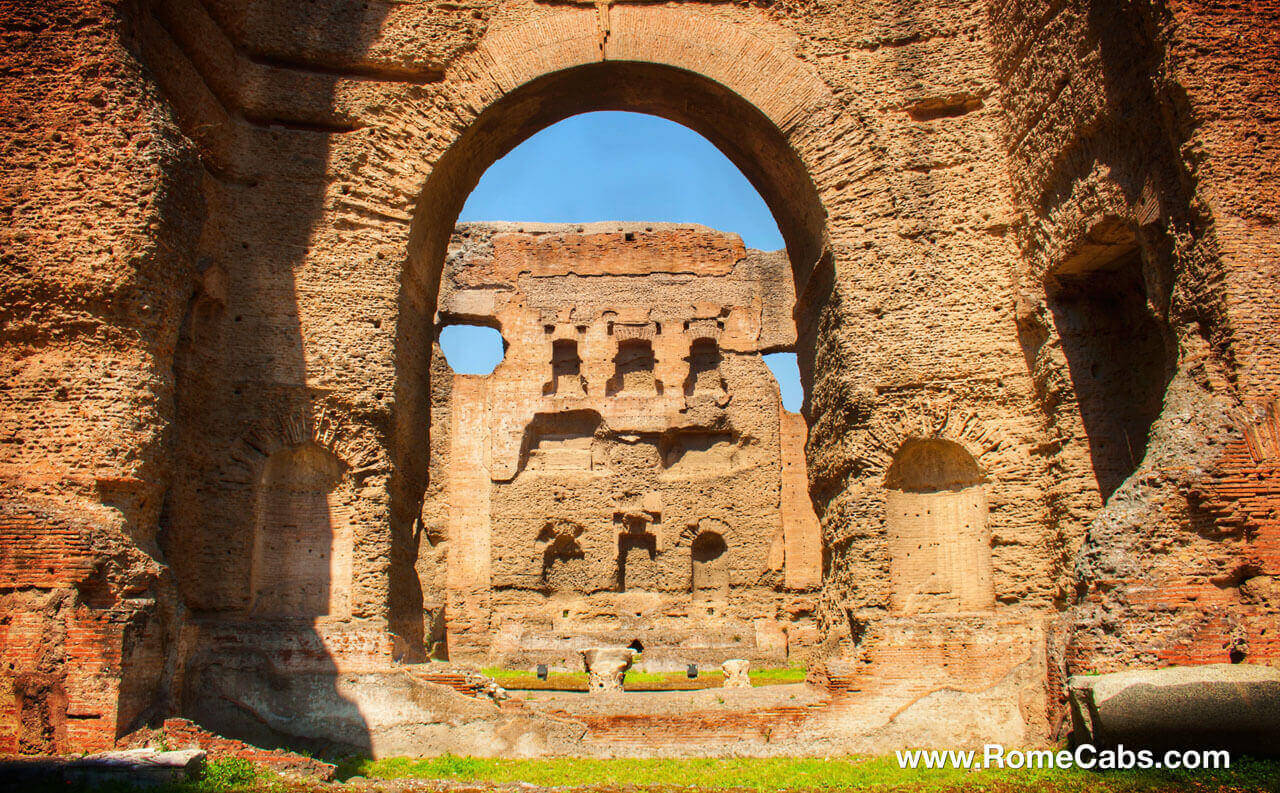
Constructing such an architectural wonder in record time took no less than an army of workers working around the clock: more than 15,000 workmen, 4,000 bricklayers, and 1,500 decorators. To accommodate underground corridors the building was raised on a 20-foot platform. The reservoir that required millions of gallons of water was fed from the Marcian Aqueduct.
Emperor Caracalla spared no expense to immortalize himself with the construction of these lavish public baths that served all socioeconomic classes. Unfortunately, the much hated tyrant emperor did not live long to enjoy his opulent baths as he was assassinated by his bodyguard one year after the baths opened to the public.
Additions and engineering renovations were made as the bath complex remained in use for 300 years free and open to the public until the Ostrogoths destroyed its hydraulic installations in the 6th century.
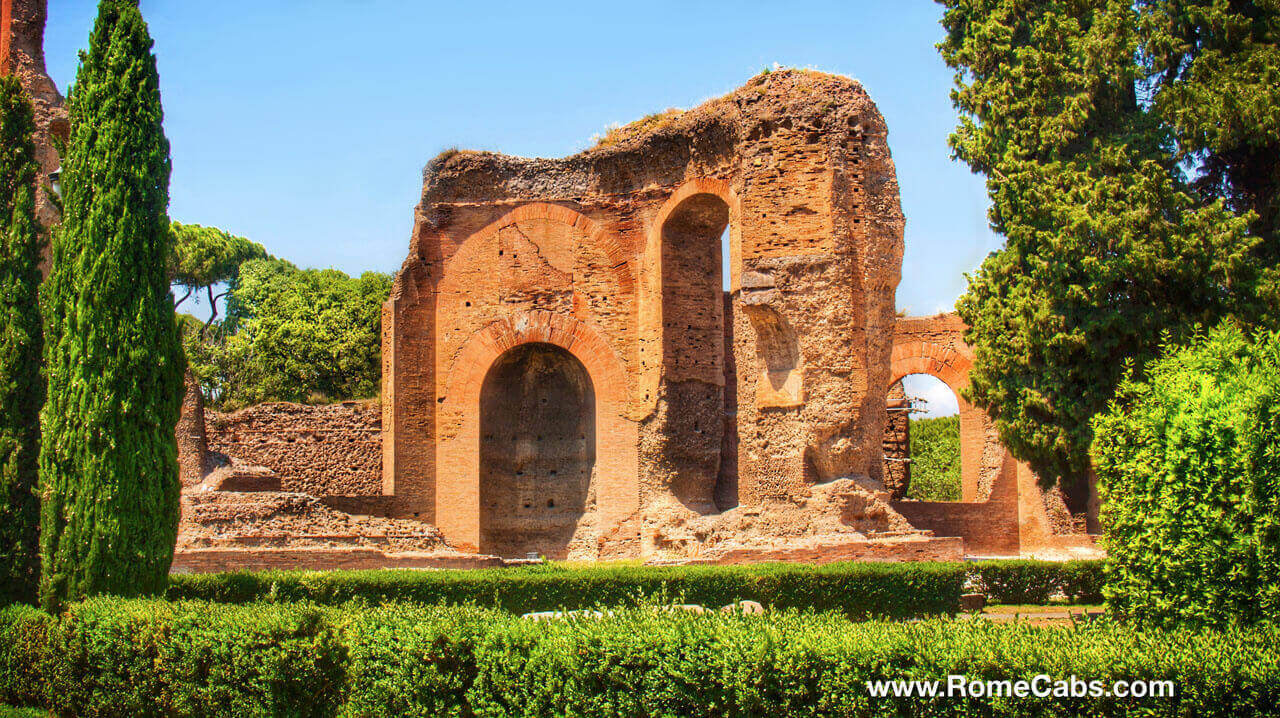
The baths fell into disuse and then into disrepair while they met the same fate as other ancient monuments that were plundered for building material to be used for other construction projects during the Middle Ages and the Renaissance, and its works of art found their way into museums.
Statues like the Farnese Bull and Farnese Hercules are featured in the National Archaeological Museum of Naples and Toro Farnese, La Flora and the Torso Belvedere along with a couple of mosaics became part of the Vatican Museums collections. Two marble tubs from the baths currently serve as fountains in Rome’s Piazza Farnese.
The impressive architecture of the Baths of Caracalla served as inspiration from Renaissance’s Donato Bramante to the first Penn Station in New York City in 1910. In the summer you sometimes find open-air concerts and performances that take place among these wondrous ruins.
VIA APPIA / ANCIENT APPIAN WAY
As if Romans have not already achieved insurmountable architectural feats, they also proved to be excellent road builders (roads were called viae), giving way to the popular expression: "all roads lead to Rome".
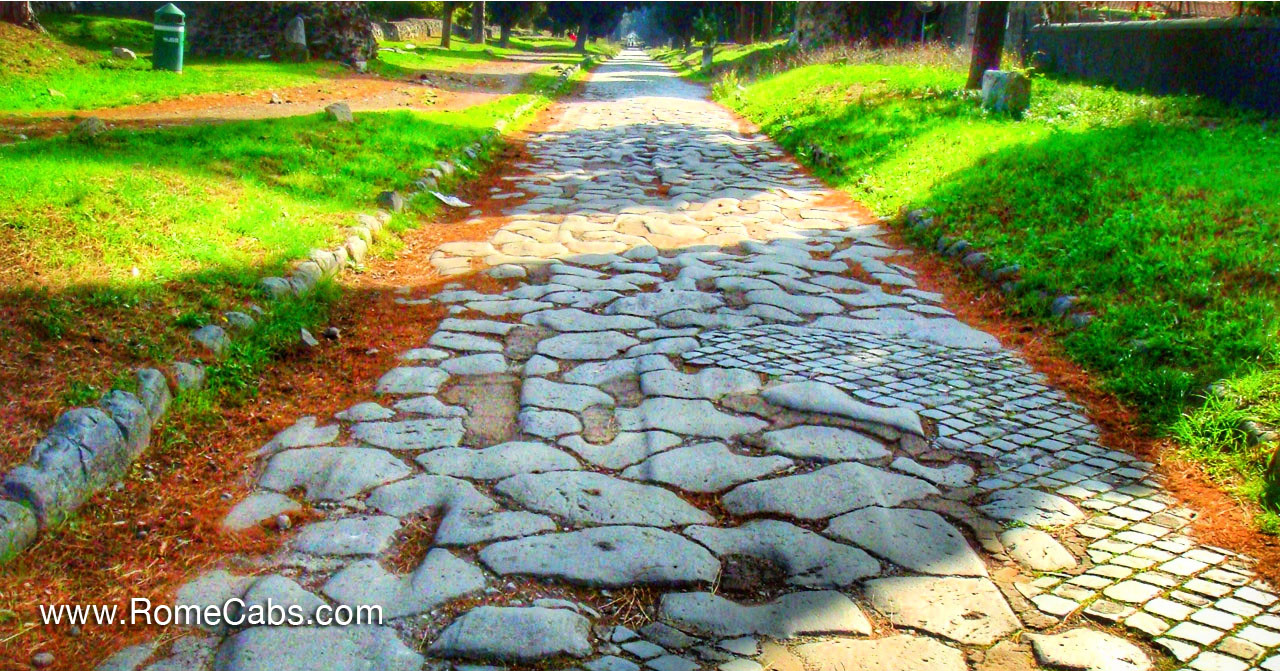
The first Roman road, Via Appia, was built as a strategically significant military road to connect Rome to Apulia in 212 BC during the Samnite Wars. As Rome expanded, it needed a way to connect its nerve center to the outer extremities of its empire to make moving armies, messengers, military equipment and goods fast and efficient.
Up until Via Appia was initiated by the Roman censor who lent his name, Appius Claudius Caecus, roads were primitive enhancements of ancient paths that avoided rivers and hills, proving an unreliable means of transportation. Within 200 years of Via Appia’s construction, a network of more than 200,000 miles stretched out from Rome and reached the farthest corners of the Empire, expanding at half a mile a day.
The roads held the Roman empire together keeping it well connected to maintain stability and made expansion more efficient.
Another innovative technique used by the Roman civil engineers used in ancient times that is still used today (though much more advanced) is the surveying system. The Romans used 2 primary devices to lay the straight road lines: a rod and a groma.
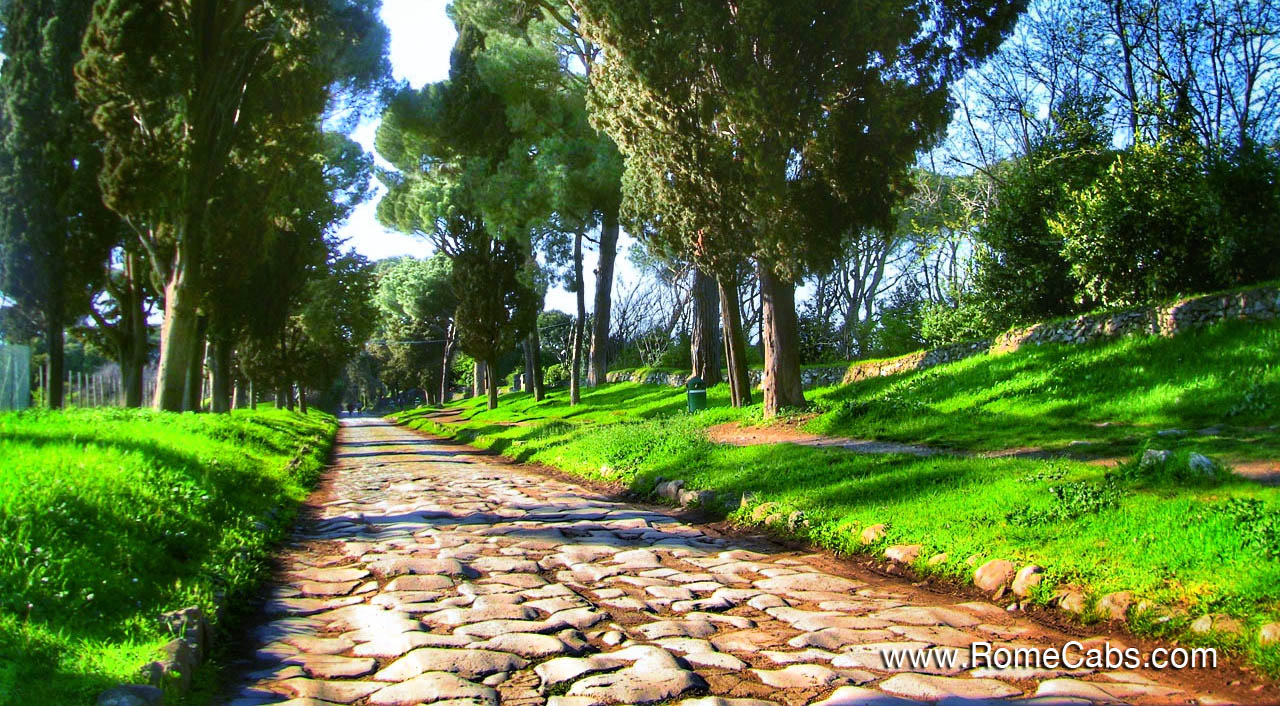
Rods were used as indicators placed erect along the path the road should take, and the civil engineer surveyed the rods through the groma and directed the rods to be moved as necessary to produce a straight line ahead. Because this surveying technique did not allow for turns and bends, when topographical obstacles were encountered, the road made sharp turns around the obstructions.
What made these roads so impressive is their durability, with some ancient roads still in use today, such as the Ancient Appian Way. There was a formula the Roman engineers conceived ensured the roads’ longevity and durableness. A flat trench was dug upon which sand and small stones were laid. On top was placed a layer of gravel and mortar. These layers were then covered with tight fitting interlocking pavement stones to provide a level surface.
Cylindrical Mile marker stones (each Roman Mile equaled 1,000 steps) were installed along the roads and engraved with specifications of the current emperor and the distance to the next town.
Via Appia remains the “Queen of the Long Roads”, as coined by Roman poet Statius. The road itself is still in existence, with the Ancient Appian Way section a testament to the durability of the road, which now is more than 2,300 years old.
PARK OF THE AQUEDUCTS
Fresh water was the blood of Rome, it provided water for drinking, agricultural irrigation, private homes, and public baths and latrines.
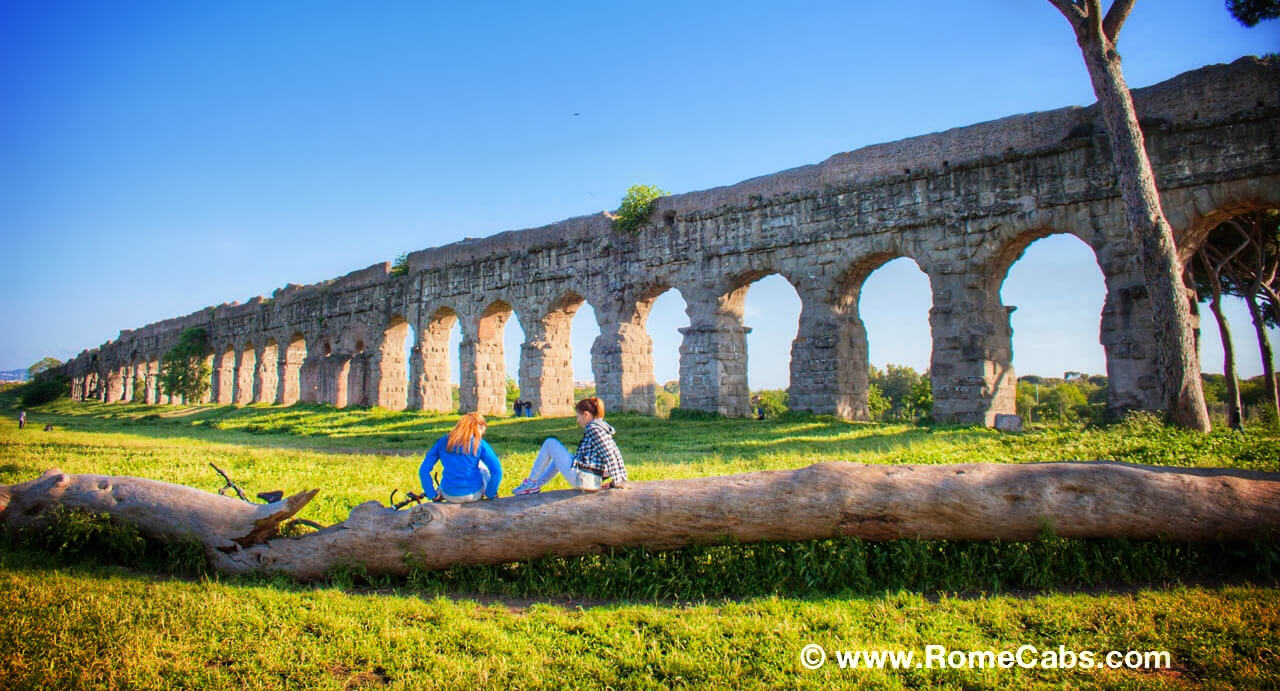
In order to bring in fresh water from the natural springs in the hills several miles outside of Rome into the populated city below, an engineering breakthrough produced the aqueducts that carried water by means of gravity through a network of more than 400 miles of underground tunnels and above ground channels that at their peak brought in 230 million gallons of water through 11 aqueducts to Rome’s 1 million people.
Because water needed to be pure and clean for drinking, the water passed through several purification tanks and traveled through sealed aqueduct channels and tunnels to prevent contamination from outside elements.
What made the water possible to travel from the hills and into Rome’s fountains, was the engineering designs that utilized gravity and a particular degree of incline. At times the water traveled underground through large tunnels that cut through hills.
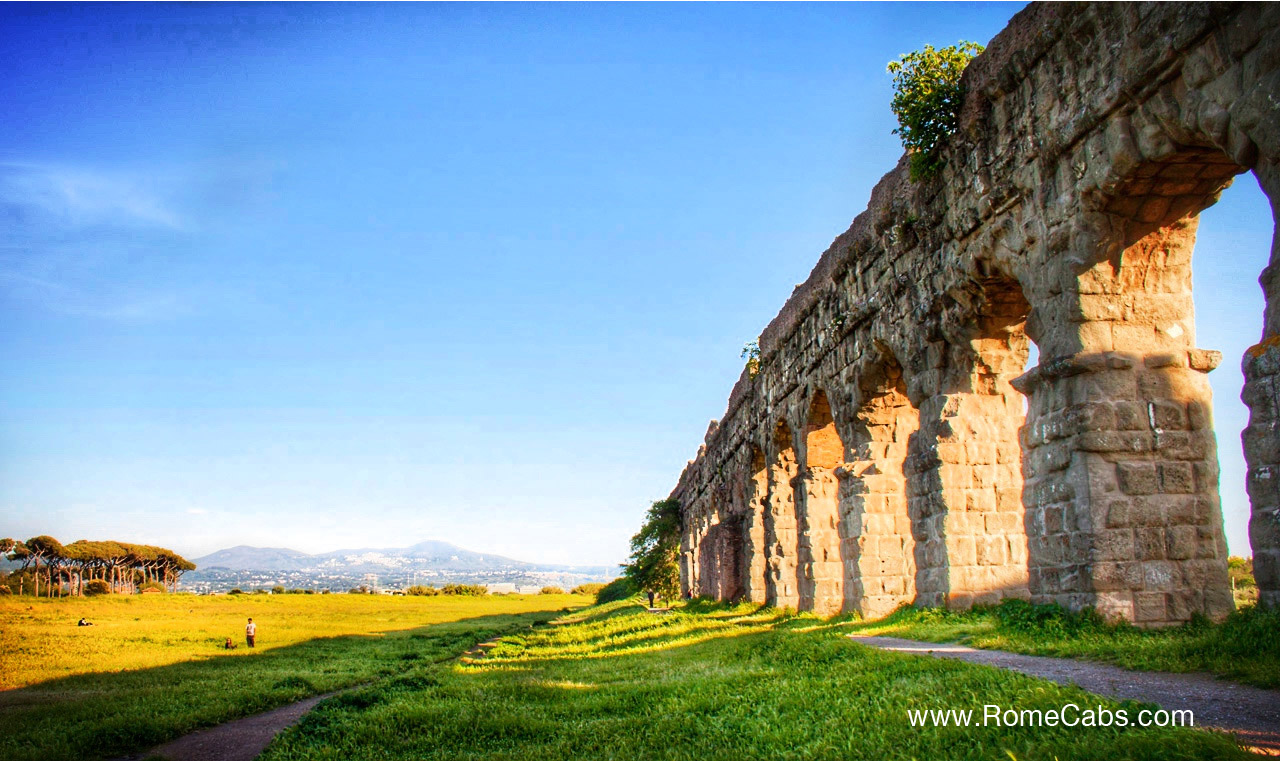
These tunnels were constructed so well that some are still in use today! Other times, depending on the topography upon which it traveled, the water passed above ground via the aqueducts. Because building tall solid walls of more than 6 feet became too costly and unstable, arches were implemented.
However, at times the arches needed to be very tall to maintain the specific degree of incline, but the arches lost stability past 68 feet. In such cases, a second or even a third tier of arches was stacked to provide the necessary stability and height.
When the aqueducts passed through rivers and bodies of water, waterproof cement was used to secure the structure. Regular maintenance was required to keep the aqueducts functioning well.
When the water from the aqueducts reached Rome, it was deposited in 3 large cisterns: one to serve the public, one to serve the public baths, and one to serve private households who paid a water tax for this privileged luxury (the tax helped cover the expense of providing the public with free water).
The aqueducts were such an integral part of Roman life that when some were destroyed by the Goths in mid 6th century during a siege that resulted in a significant amount of water supply to Rome being cut off, it decimated Rome and its population was reduced from one million to 30,000 by the Middle Ages.
THE PANTHEON
A great example of Rome’s architectural accomplishments is the Pantheon, the ancient temple dedicated to all gods.
The original name and the intended use for this temple is still a mystery, but its construction has never ceased to amaze, educate, and inspire. It’s not only the best preserved ancient Roman monument surviving the burden of time, elements, and gravity but the longest in continuous use throughout its 2,000-year history.
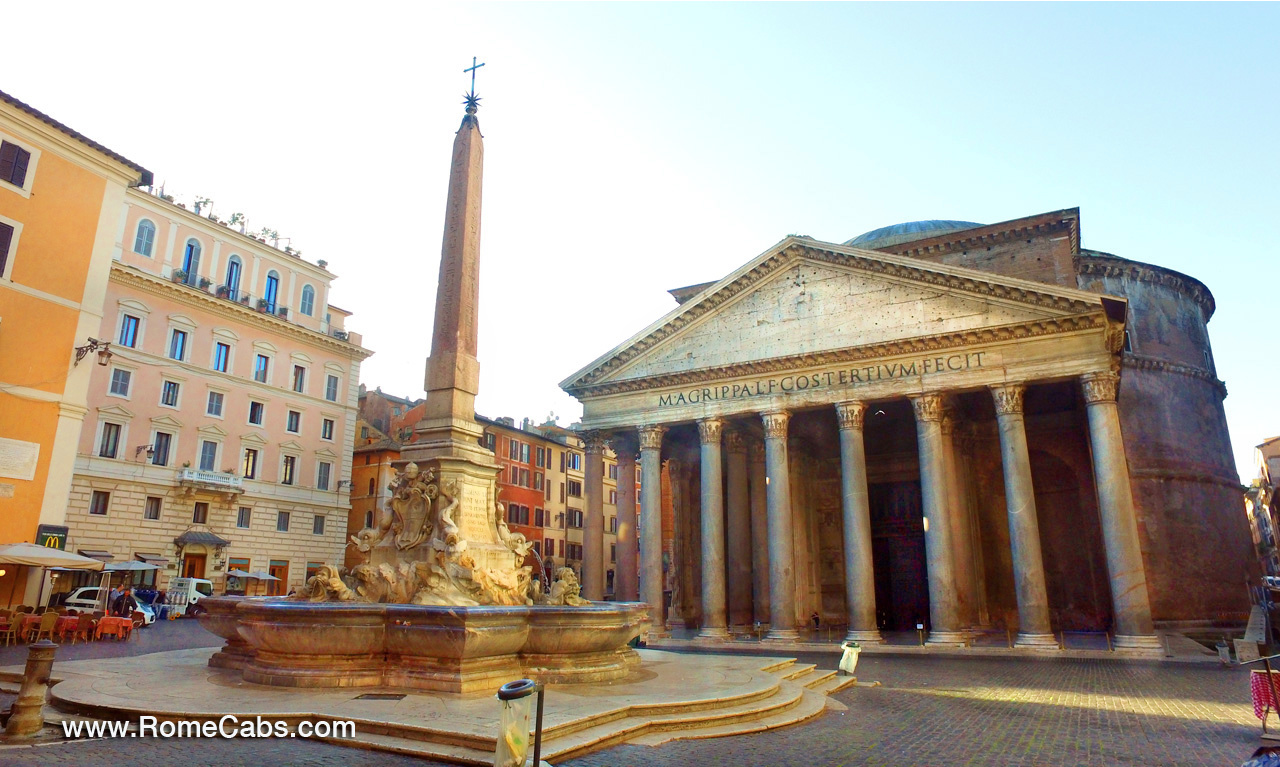
Its preservation and continuous use is credited to it having been converted into a church dedicated to Saint Mary and the Martyrs in the 7th century.
The monument we see today attributed to Emperor Hadrian is the third Pantheon constructed on this site as the first one commissioned by Marcus Agrippa (built in 27 BC) was destroyed by a great fire in 80 AD, and the second rebuilt by Emperor Domitian was also destroyed by fire in 110 AD.
As you approach the Pantheon you will first enter the Portico that’s held up by 16 grey granite columns quarried and imported from Egypt that traveled on the water along the Nile River in Egypt into the sea and arrived via the Tiber River in Rome. Each column measures 39 feet tall and 5 feet in diameter and weighs 60 tons. The awkward level of the portico in relation to the temple itself can be attributed to its original design intended to accommodate columns at 50 feet tall.
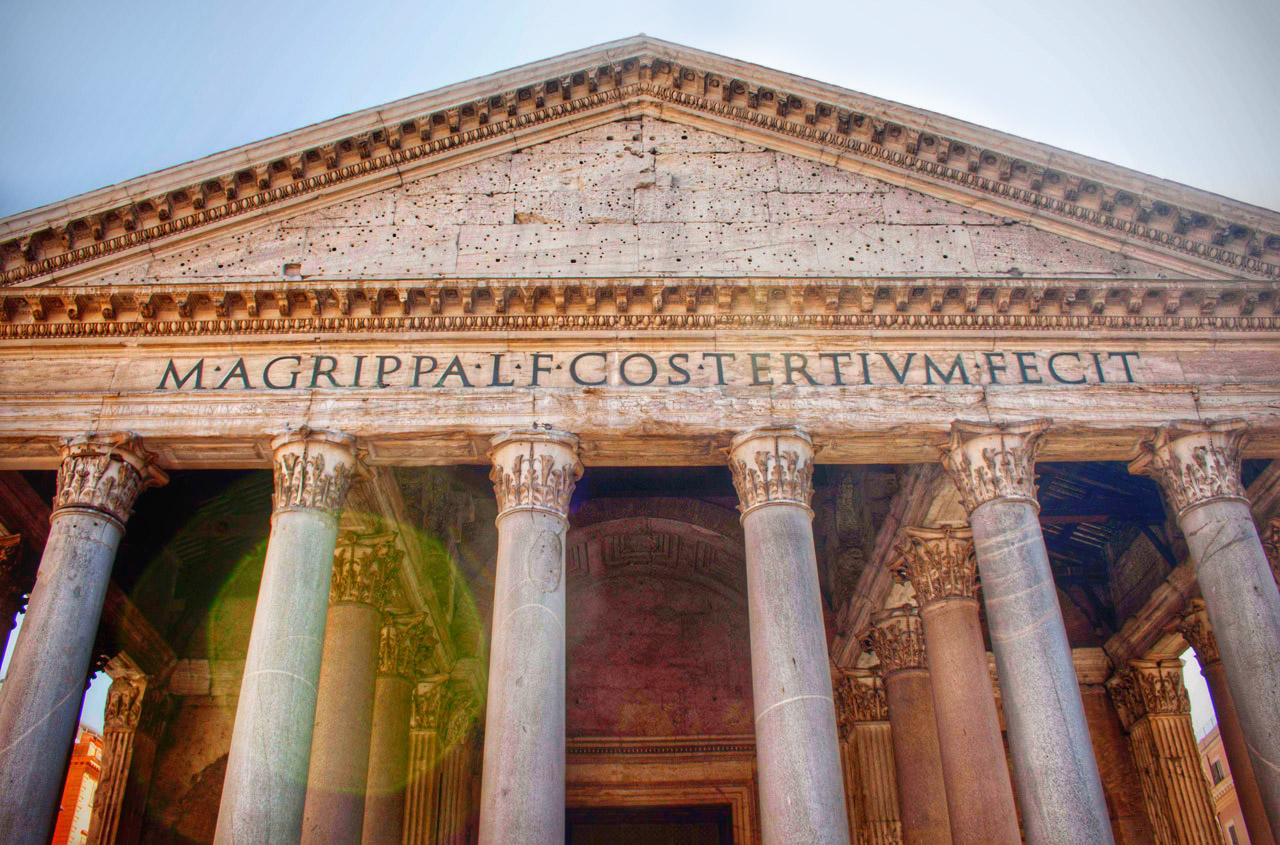
The cross beams above were once adorned with bronze, but the bronze was allegedly removed by Pope Urban VIII (from the Barberini family) to be used in creating the Baldacchino (bronze canopy) inside St Peter’s Basilica. Many such examples of plundering ancient monuments for construction materials inspired a rise in satires including: Quod non fecerunt barbari, fecerunt Barberini or ‘What the barbarians did not do, the Barberini did’.
There are many features that makes this temple one of the world’s greatest architectural wonders. The interior is a perfect circle at 142 feet in diameter and height to the oculus, making it a perfect fit inside a cube.
But the most astounding feature is its dome, an engineering masterpiece twice the size of any previous domes and not superseded till the Renaissance era. At 142 feet across, it is the largest dome in the world made without reinforced concrete. In the dome’s center a 33-foot-wide oculus further lightens the weight while acting as a compression ring. The hollow oculus opens up the sky allowing light, ventilation, and nature’s elements to flow into the temple.
Its seemingly simple grace and elegance is nothing short of advanced sophistication applied by these ancient engineers who aimed to reduce its incredible weight and pressure while guaranteeing durability without compromising on beauty.
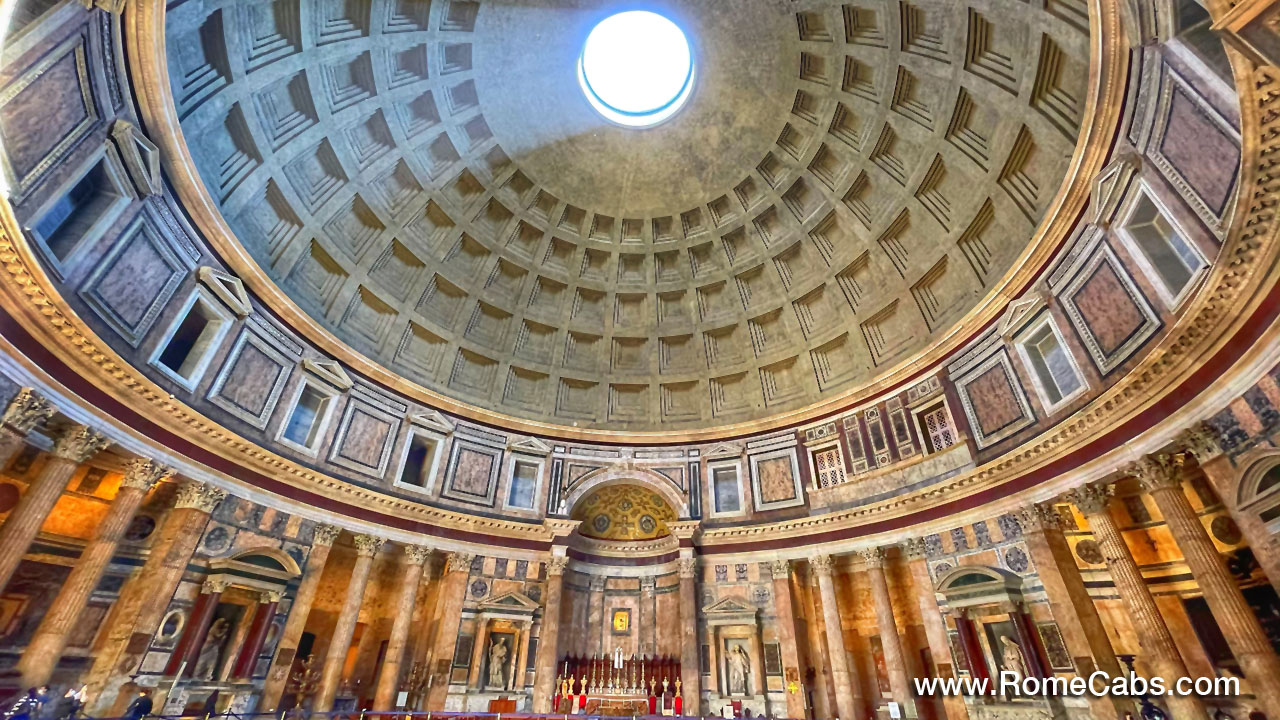
The dome itself rests inside and over the enormous 6 foot thick reinforced walls of the temple to prevent it from expanding outward. To avoid the stress of the dome from collapsing under its own weight, its base is 21 feet thick and gradually reduced to 4 feet thick around the oculus. Five rings of 28 decorative honeycomb coffered panels of the dome’s interior not only enhance the perception of height by becoming smaller in size as they reach the oculus, but they help further reduce the overall thickness and weight of the dome itself.
The materials used also varied from the base to the oculus. Had the Romans used regular concrete throughout this enormous semisphere it would have added 80% more stress to the structure. There were different types of cement used in building the dome with the heaviest cement mixture at the bottom, and lighter and porous materials such as tufa, brick, and Pozzolana (volcano ash) at the top.
This architectural masterpiece inspired many architects throughout history, making it among the most influential buildings of its time.
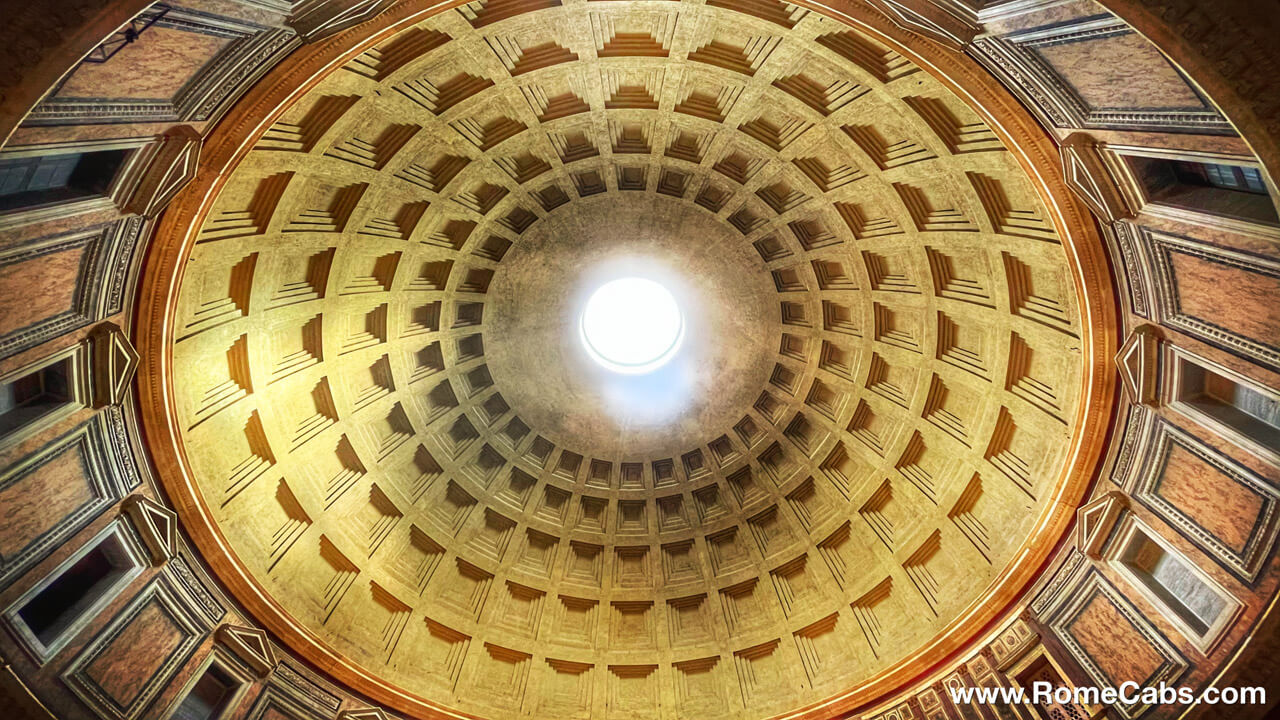
Brunelleschi was greatly influenced by the Pantheon dome when he successfully created the dome of Santa Maria del Fiore in Florence in the early 1400s.
Michelangelo is said to have studied it before lending his skills in designing the dome of St Peter’s Basilica a century later. The architectural style of the Pantheon can be seen in many modern Western buildings including city halls, universities, and libraries.
TRAJAN’S MARKET – Ancient Rome’s shopping center
There were 5 forums built in Ancient Rome, but Trajan’s Forum rivaled all of them, including the famous Roman Forum.
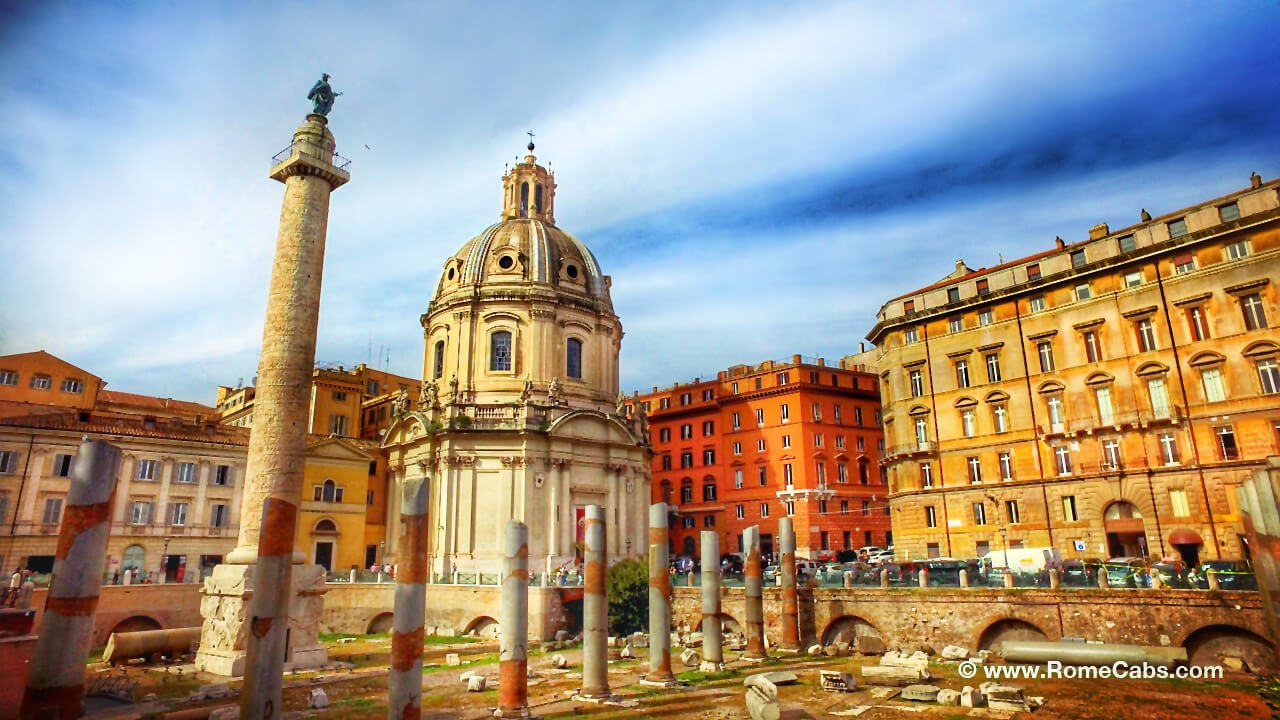
The last of the Imperial Fora to be built, Trajan Forum’s enormous size encompassed all the other forums together. Construction of this enormous complex was funded by Trajan’s victorious campaign against Dacia (the former Romania) and realized by his chief architect Apollodorus of Damascus.
The piazza in the forum measured 650 feet by 400 feet and it was surrounded by arcades with exedrae on both sides and decorated with statues of Trajan. Inaugurated in 112 AD, this spectacular marble and bronze forum contained Latin and Greek libraries, a law court known as Basilica Ulpia, a temple dedicated to the deified Trajan, a triumphal arch crowned with an imposing equestrian statue of Trajan, a triumphal column, and the world’s first shopping center: Trajan’s Markets.
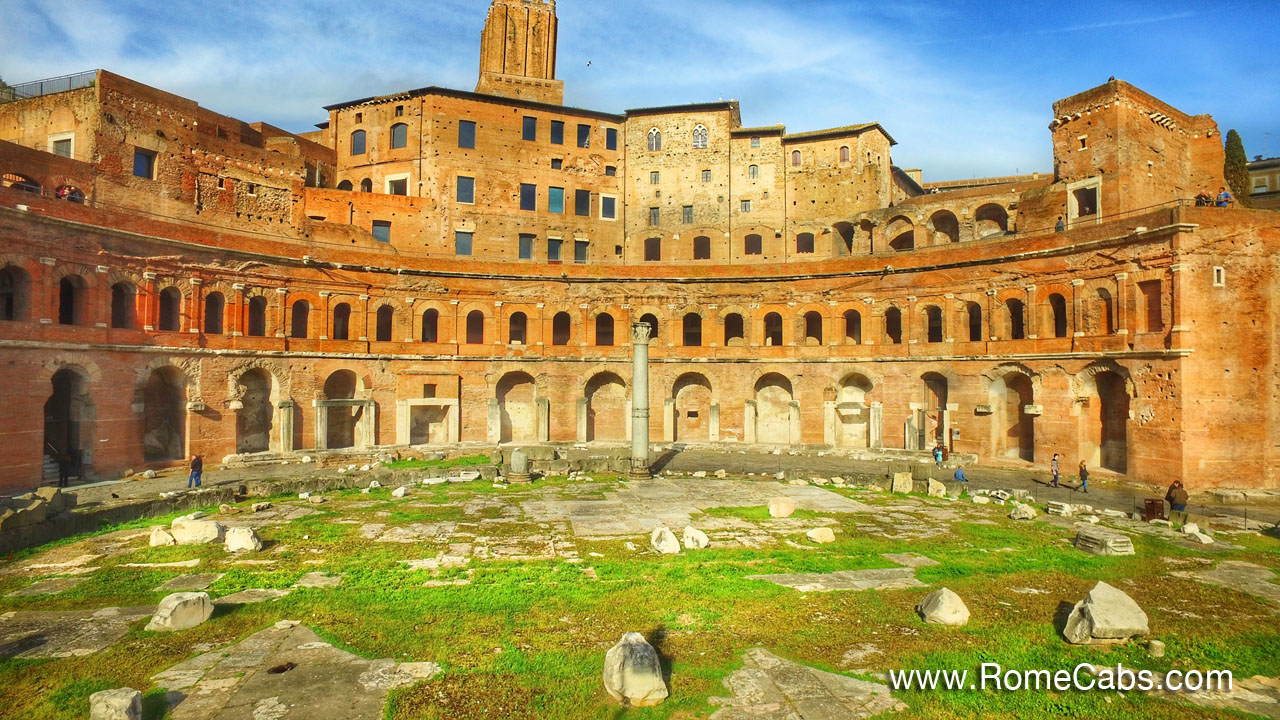
The innovative Trajan’s Market was cutting edge for Ancient Rome, and the ancestor of modern-day shopping malls and centers. To make its construction possible, a portion of the Quirinial hill was carved out 130 feet high, and a sophisticated hillside 5-level terraced shopping complex was built to house 150 shops including bars and take-out shops.
The shops offered the Roman populace a bounty of goods imported from the far world and served as a social center where locals had the opportunity to eat, shop, relax, and socialize with others. On the 5th floor, free rations were distributed to the people. It is believed that Trajan’s Market also housed administrative offices.
The use of brick and concrete helped achieve its construction. Although halved bricks were used as wall facades for architectural function and design, a mixture of concrete and rubble was poured in the inner portions of the walls to provide enough strength and stability to achieve 5 floors in height.
Today, you will notice that during the Middle Ages, new floor levels and a defense tower were added as people throughout Rome incorporated ancient buildings into new structures. You can still admire what is left of the once awe-inspiring forum that was far advanced for its time.
Ancient Romans were in many ways visionaries ahead of their time, not surpassed until a millennium later. Their perfection of existing techniques, revolutionary inventions, and innovative engineering achievements have contributed greatly to society and the world owes much to this ancient civilization.
These Seven Wonders of Ancient Rome display the mastery and splendor of Rome’s accomplishments, and they invite you to experience them for yourself.
For more information on the Seven Wonders of Ancient Rome tour of Rome, please visit our website. We look forward to hearing from you and showing you Rome!
Thank you very much and we look forward to showing you Rome!
The Rome Cabs Team
* Don't miss out MORE Italy Travel Articles from RomeCabs *
- 3 Famous Towns in Italy to visit during Summer Historic Festivals
- 3 Common Mistakes that Ruin Your Summer Trip to Rome – by RomeCabs
- Italian Christmas Traditions you’ll love!
- Rome in A Day – Top Must See Places in Rome
